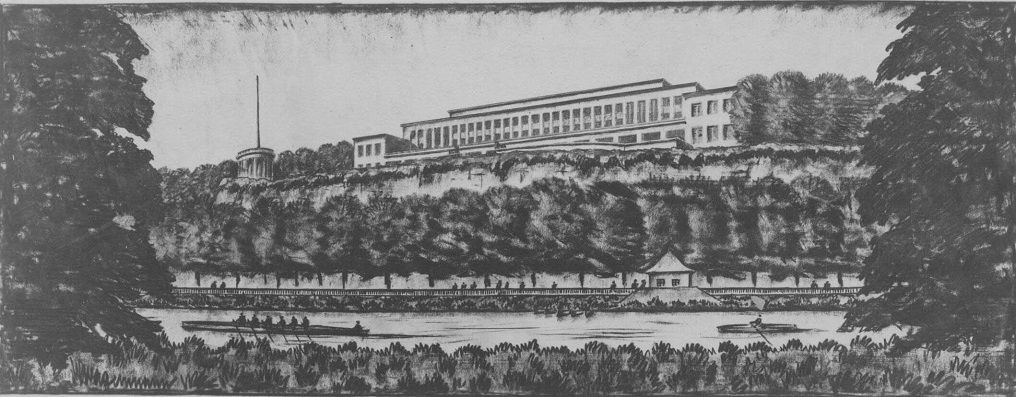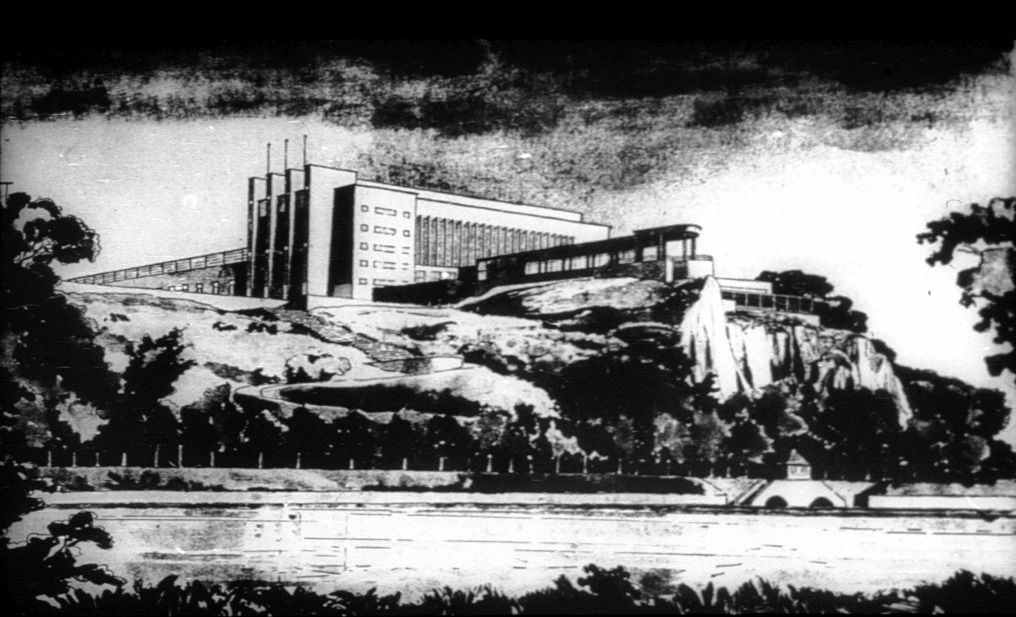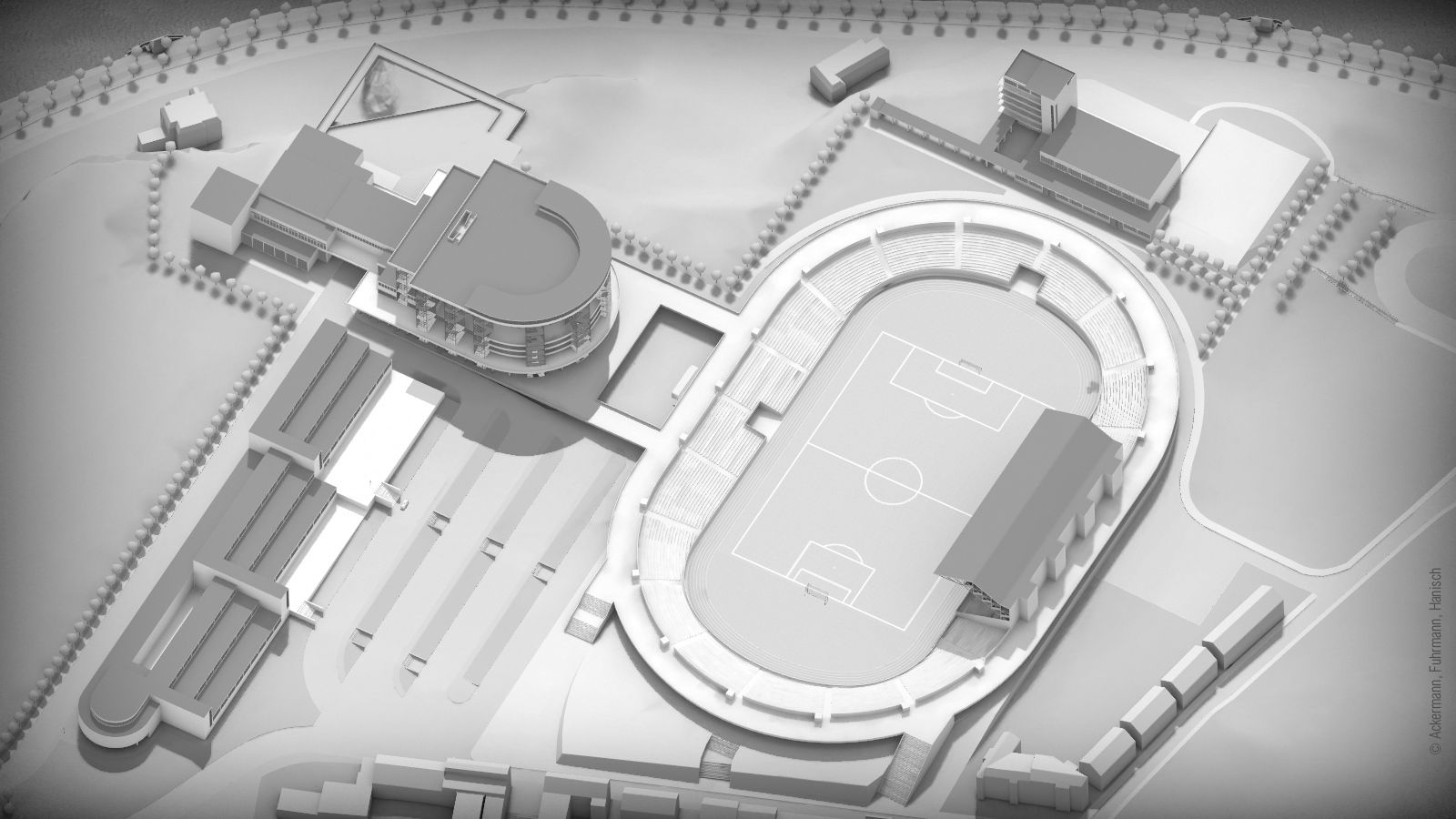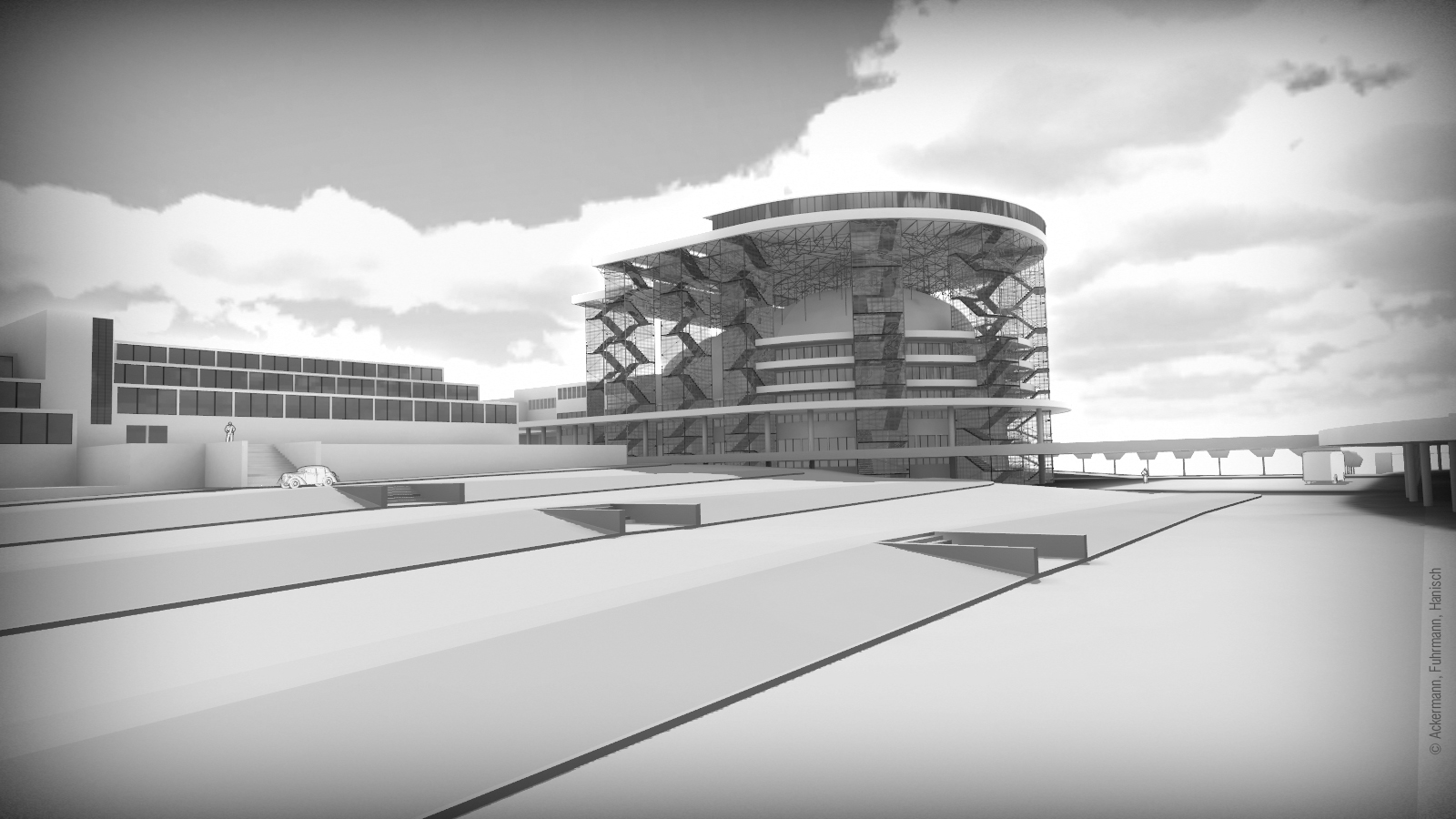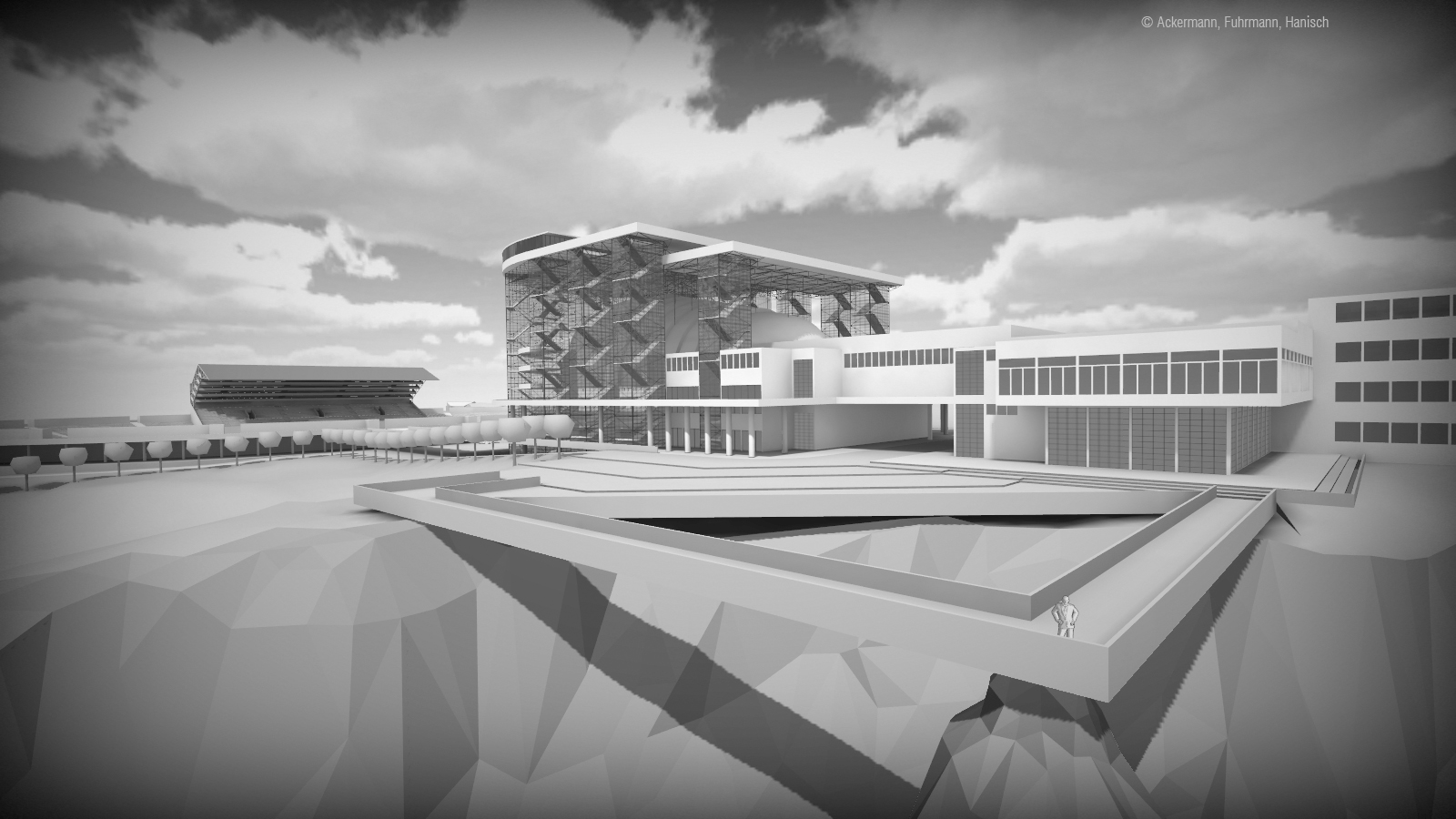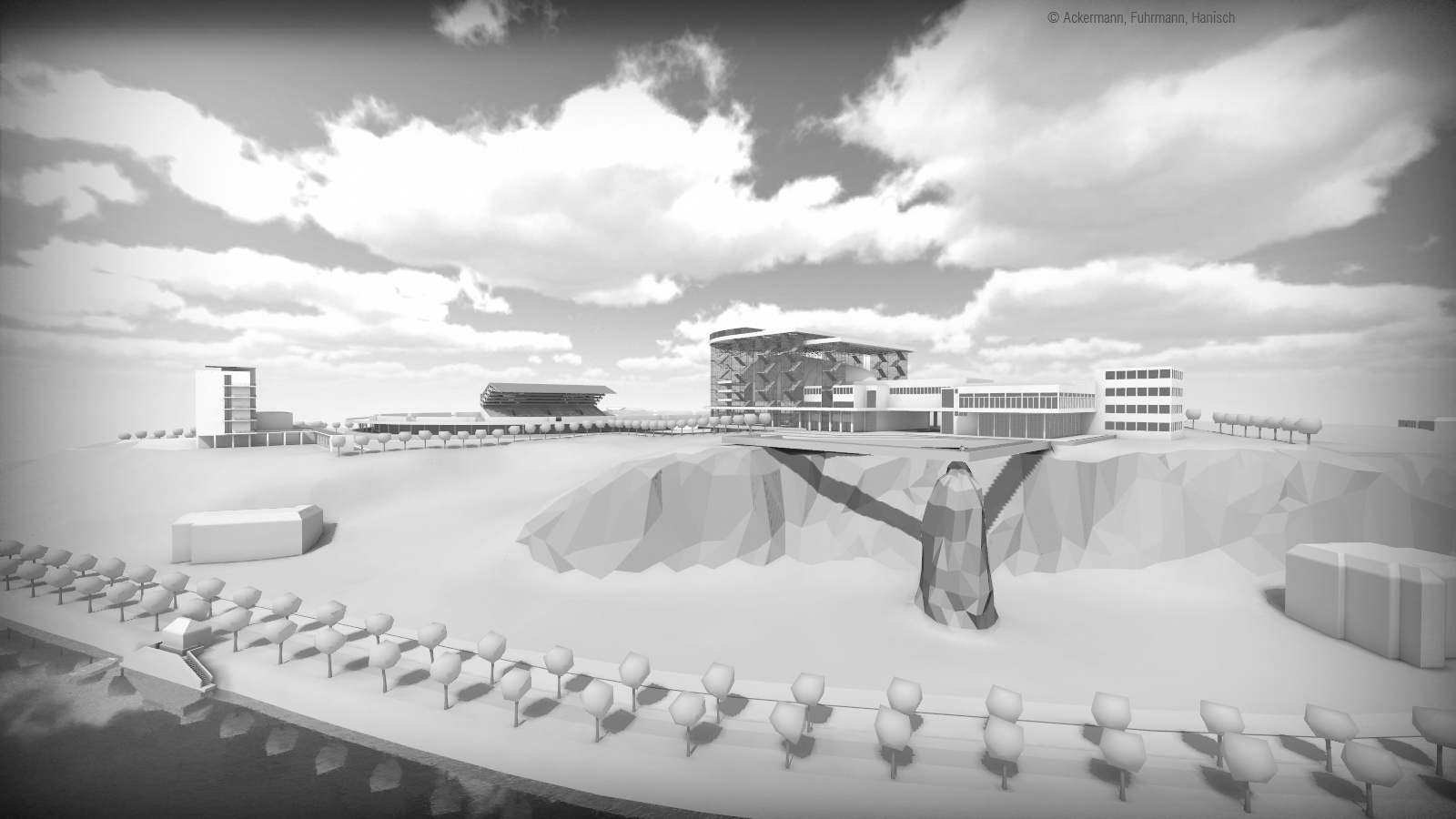44
Halle’s Crowning Glory
Heinrich-Heine-Felsen
In 1927, the city of Halle organised a competition challenging enough to make the headlines. A modern administrative and cultural centre was to be built on Lehmann’s Rock, on the River Saale, and was to include a municipal hall containing a festival hall and a concert auditorium, a museum, a sports stadium and a restaurant.
The project, however, was never implemented, although a number of prestigious architects entered the competition. The twenty-four designs fell into oblivion and were only rediscovered a few years ago.
A particularly bold project was that of Walter Gropius which was too far ahead of its time to be understood. Almost all the entries reflect the visionary fantasy which influenced the ‘New Building’ of the 1920s.
Competition entries for major building projects were only rarely realised in the Weimar Republic. That makes it all the more remarkable that the city of Halle should have organised a competition of such scale—even if none of the entries was ever built.
In 2011 for an exhibition at the Kunstmuseum Moritzburg Halle and at the Bauhaus Archive in Berlin, the competition designs were transformed into models. The design by Gropius, a key building of modernism, was used to create a three-dimensional visualisation of the area based on the drawings submitted (analysis, interpretation and modelling: Daniel Ackermann, Christine Fuhrmann, Bernd Hanisch). As part of her dissertation at the University of Halle, Christine Fuhrmann presented the scientific treatment of this spectacular construction project of Classical Modernism. In 2019, Gropius' design will be realized on site on the Lehmann Rock as an interactive, walkable and immersive virtual reality application.
In 2011 for an exhibition at the Kunstmuseum Moritzburg Halle and at the Bauhaus Archive in Berlin, the competition designs were transformed into models. The design by Gropius, a key building of modernism, was used to create a three-dimensional visualisation of the area based on the drawings submitted (analysis, interpretation and modelling: Daniel Ackermann, Christine Fuhrmann, Bernd Hanisch). As part of her dissertation at the University of Halle, Christine Fuhrmann presented the scientific treatment of this spectacular construction project of Classical Modernism. In 2019, Gropius' design will be realized on site on the Lehmann Rock as an interactive, walkable and immersive virtual reality application.
